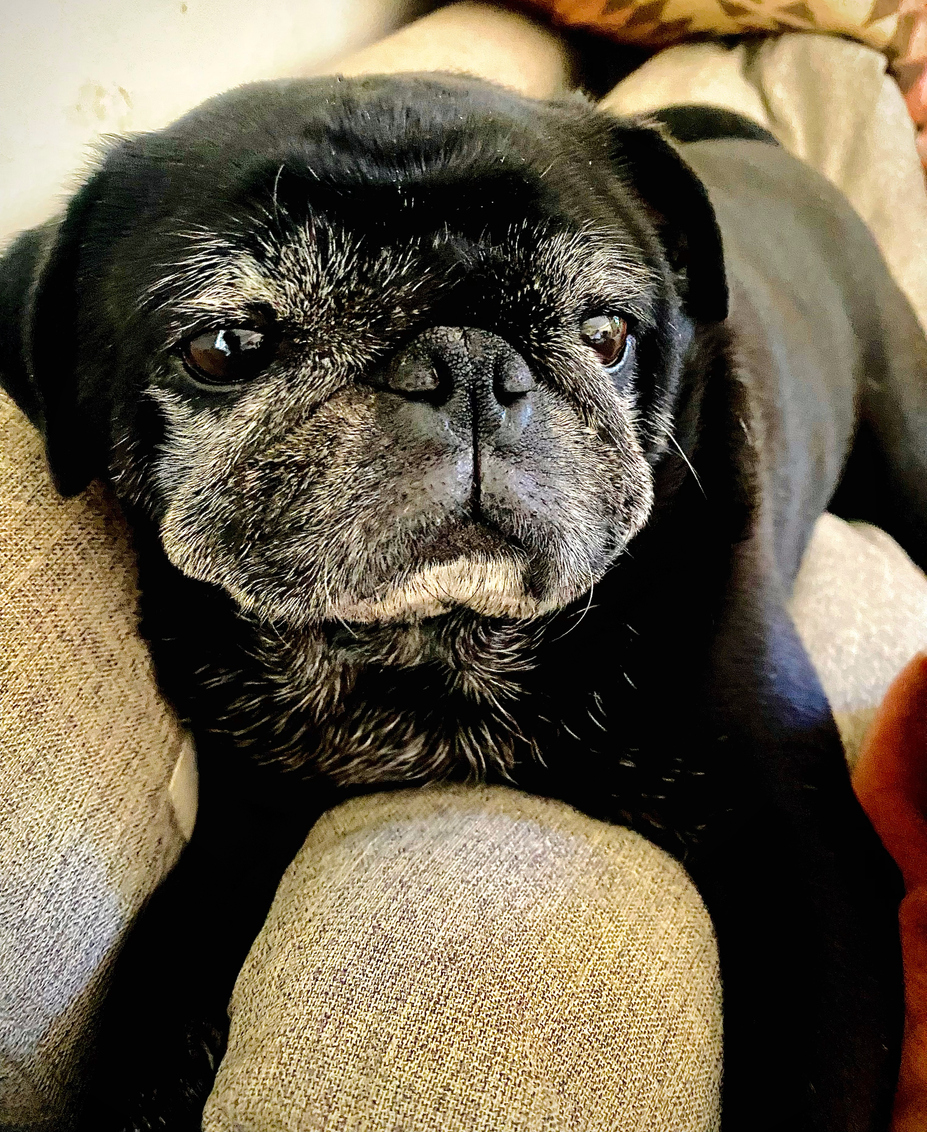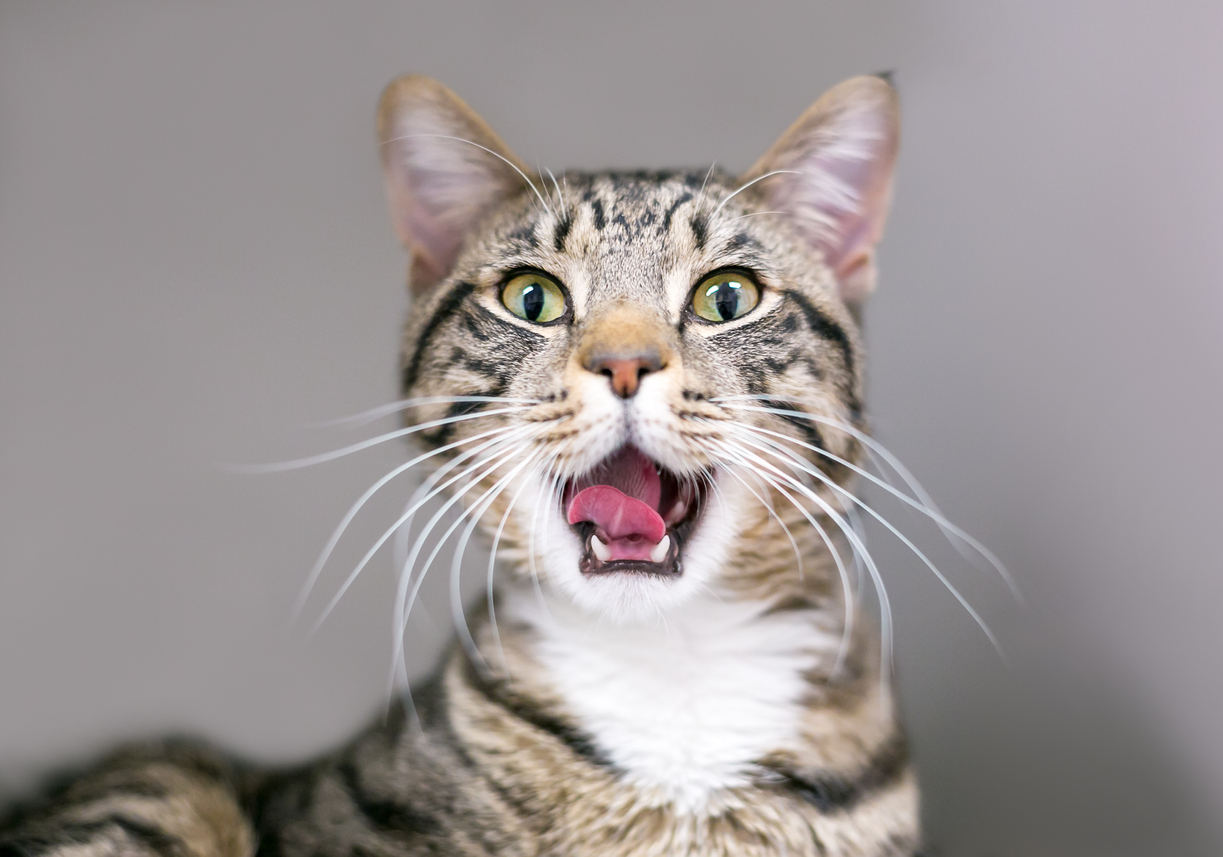Pulmonary Hypertension
What is pulmonary hypertension?
Pulmonary hypertension means that the peak blood pressure in the arteries of the lungs is much higher than normal. To better understand this, it is helpful to understand the anatomy of the heart.
The heart is composed of four chambers. The top two chambers are the right and left atria and the bottom two chambers are the right and left ventricles. The right ventricle pushes the unoxygenated blood into the lungs to receive oxygen, and the left ventricle pushes the oxygenated blood into the aorta for circulation to the rest of the body.
The heart also has a number of valves. The tricuspid valve, which has three parts, is located between the right atrium and the right ventricle, and the mitral valve, which has two parts, is located between the left atrium and the left ventricle. The valve between the right ventricle and the main artery that leads to the lungs is called the pulmonary valve. Finally, there is another valve between the left ventricle and the aorta called the aortic valve.
Several abnormalities can lead to high blood pressure in the arteries of the lungs. These include:
- narrowing of the arteries or tiny blood vessels (capillaries) of the lungs
- blockage of the main artery into the lungs (the pulmonary artery)
- high blood pressure within the left atrium which leads to an increase in blood pressure in the capillaries of the lungs
- excessive blood flow into the arteries of the lungs
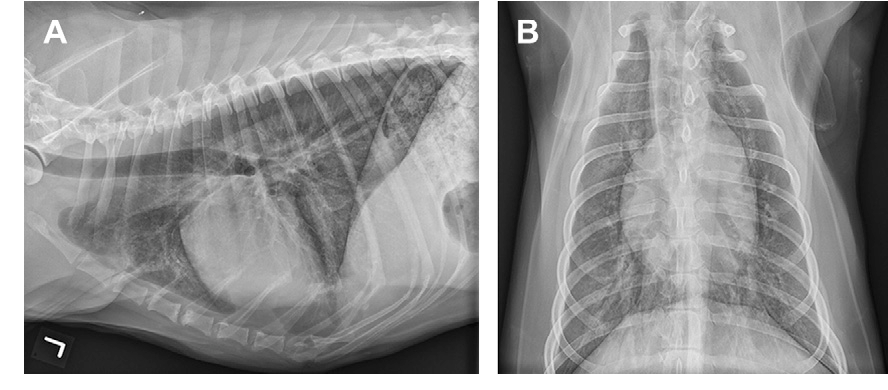
Does this mean that my pet has a problem with her heart or with her lungs?
Many of the underlying reasons for high blood pressure developing in the arteries of the lungs involve the heart itself. For example, there may be a developmental heart defect present since birth that can lead to pulmonary hypertension later in life. Most pets who develop pulmonary hypertension are elderly.
What are all the signs of pulmonary hypertension?
Most of the signs of pulmonary hypertension are due to high blood pressure in the pulmonary arteries. These signs include:
- exercise intolerance
- difficulty breathing with or without exertion/exercise
- rapid breathing
- coughing
- spitting up blood from the lungs
- fainting
- weight loss
- heart murmur
- bluish discoloration of the skin and mucous membranes (cyanosis) due to low oxygen levels in the blood
- distended jugular veins in the neck
- fluid buildup under the skin
- sudden death
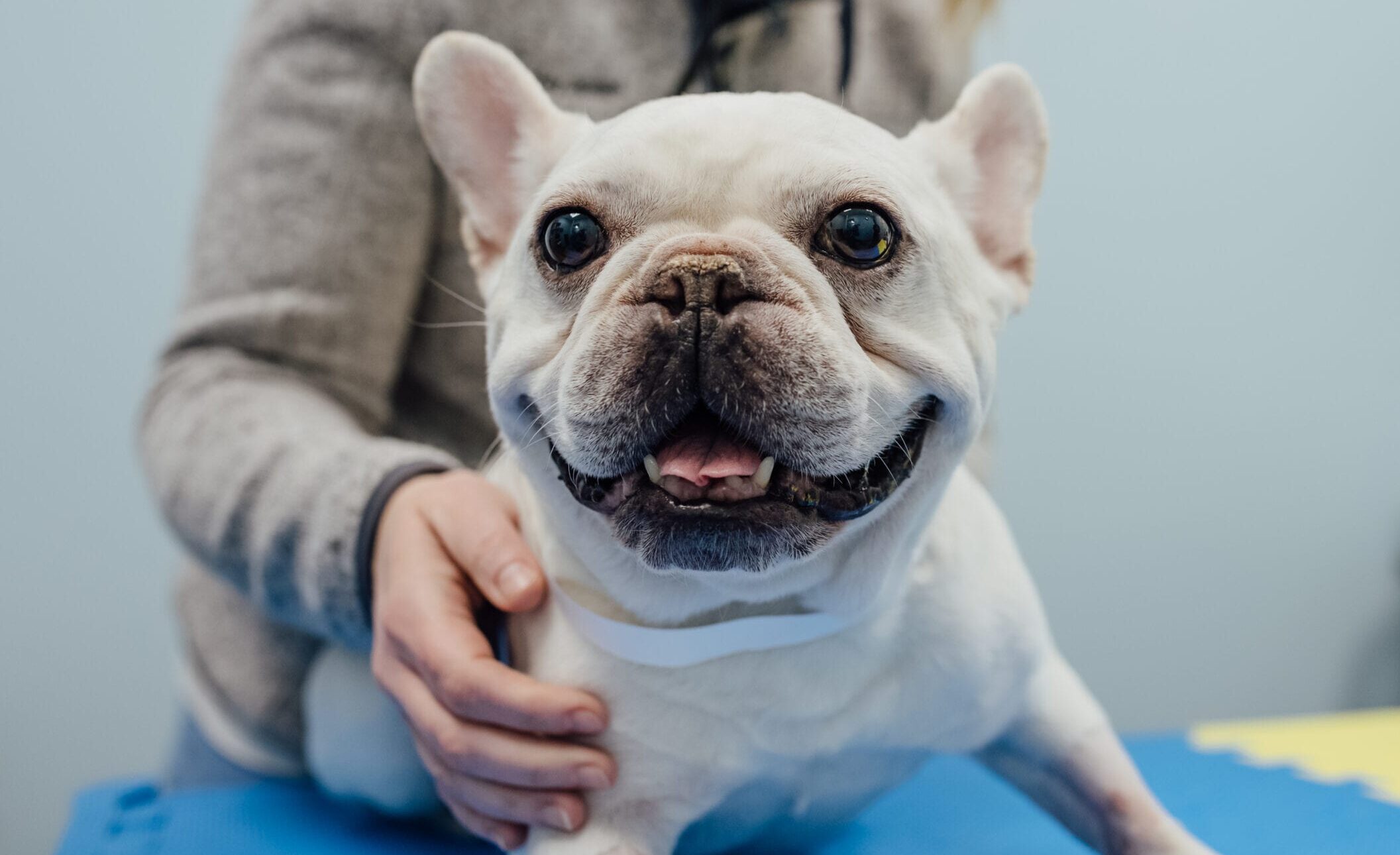
What causes pulmonary hypertension in pets?
There are many potential causes of pulmonary hypertension. A developmental disorder of the blood vessels of the lungs has been identified in people and may be a problem in pets. There may be abnormal levels of the chemicals in the blood that regulate constriction or dilation of blood vessels. Pneumonia and bronchitis have been implicated, as has chronic lung disease that leads to fibrosis or scarring of lung tissues. Tumors or blood clots in the lungs can also lead to pulmonary hypertension.
Other potential causes of pulmonary hypertension include heartworm disease, Cushing’s disease (hyperadrenocorticism), bacteria in the blood, immune-mediated diseases in which the body’s immune system targets the pet’s own tissues, and inflammation of the pancreas (pancreatitis).
Finally, changes to the heart muscle itself are implicated in the development of pulmonary hypertension. The heart muscle may become stiff and not expand to fill with blood appropriately, or the heart walls may become thickened, preventing the heart from filling and emptying normally. The mitral valves may narrow, causing increased back-pressure into the lungs, or a tumor may form in the upper chambers of the heart.
Living at high altitude and obesity may also be risk factors for developing pulmonary hypertension.
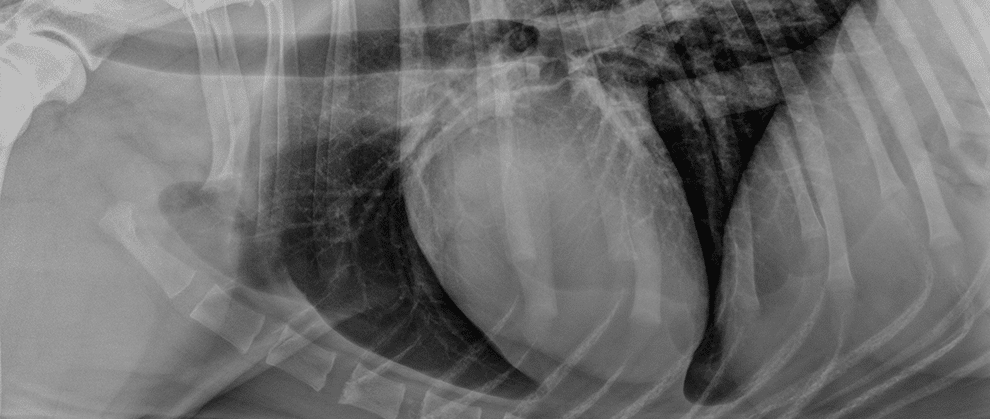
Is there any treatment for pulmonary hypertension in pets?
For pets with severe breathing distress, treatment includes hospitalization with oxygen therapy and medication to dilate the breathing passages. If needed, medication to remove excess fluid from the lungs will be given. If heart failure is a component of the illness, medication to manage that disease will be added.
In dogs, medications such as sildenafil (Viagra®), tadalafil (Cialis®), pimobendan (Vetmedin®), and imatinib (Glivec®) have been used to treat this condition. Your veterinarian will guide you through the use of the drugs.
Once home, it is important to maintain a low-stress environment while any underlying cardiac or respiratory disease is treated and managed. Activity may need to be restricted. Avoid environments that may increase the likelihood of breathing distress, including excessively cold or dry air, excessive heat, second-hand smoke, and high altitudes. Your veterinarian will guide your nutritional choices based on any underlying disease that is present. It is important to give medications according to the directions.
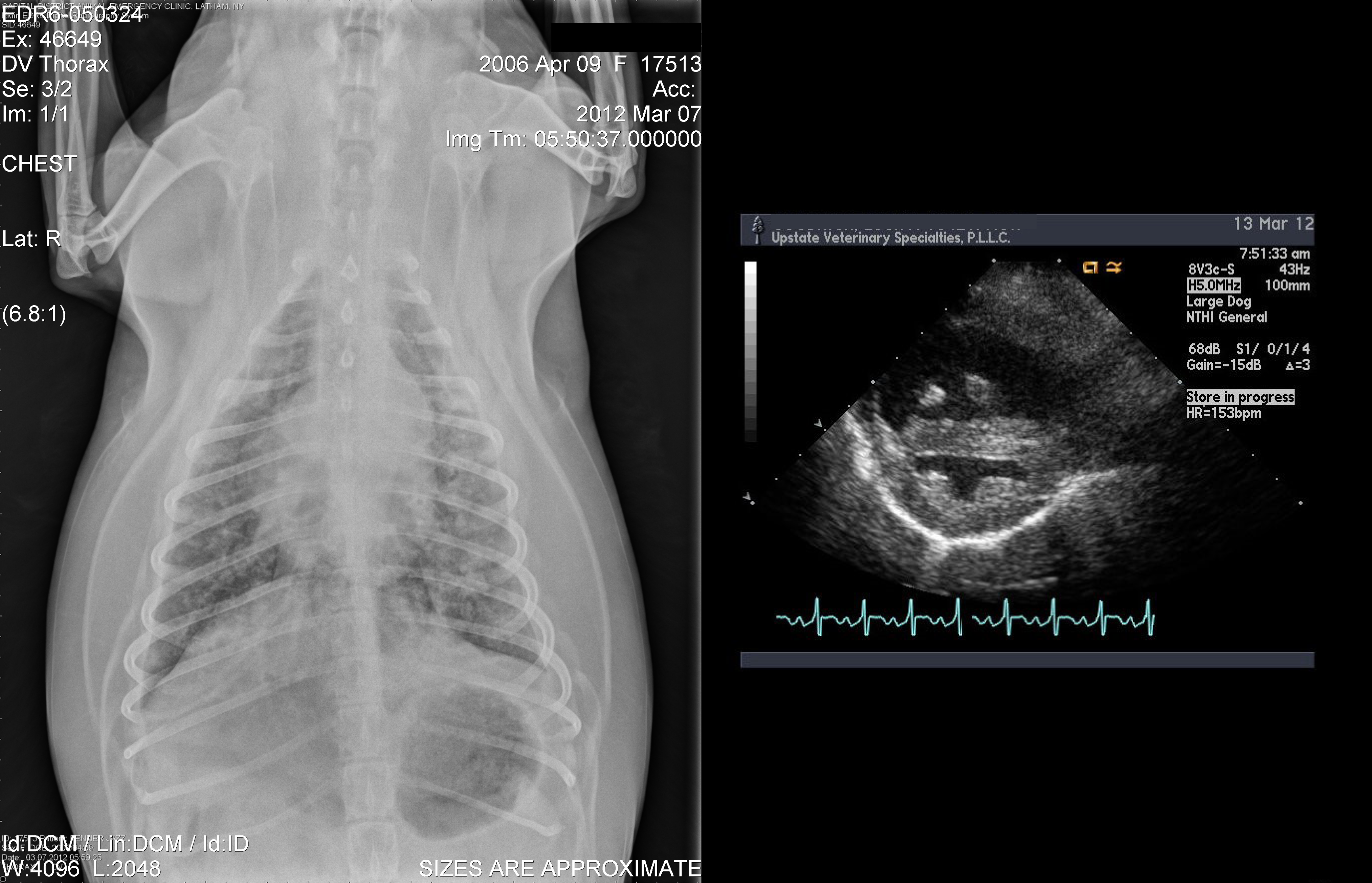
What kind of follow-up will be required for my dog with pulmonary hypertension?
It is essential to monitor dogs with pulmonary hypertension for worsening of clinical signs. Periodic physical examinations, blood pressure monitoring, and ultrasound evaluations of the heart are also important.
Possible complications of pulmonary hypertension include heart failure, fainting, and progressive debilitation. Oftentimes, changes to the heart and lungs are irreversible, and treatment will focus on comfort care rather than curing the disease. The prognosis for pulmonary hypertension is very guarded, mostly due to the changes that can occur in the blood vessels of the lungs.


